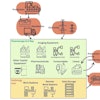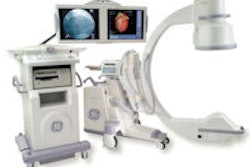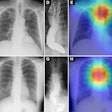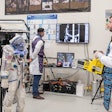Computer-aided detection (CAD) software designed to detect lung nodules with chest digital radiography (DR) can help improve the reader performance of radiology residents. Researchers found that using CAD increased the sensitivity of residents by nearly 29 percentage points, while producing fewer than three false positives per image.
That's according to a study in the May 2008 issue of Academic Radiology (Vol. 15:5, pp. 571-575) conducted at the University of Iowa's Carver College of Medicine in Iowa City. The study compared the reports of chest radiographs of cancer patients interpreted with and without CAD with the results of patients' subsequent diagnostic imaging procedures.
The study's objectives were to assess any improvement in reader performance using CAD for chest nodule detection and evaluate how CAD affected reading room activity and reader efficiency.
"This study was more an audit of performance rather than a formal clinical trial," said Dr. Edwin van Beek, Ph.D., a professor of radiology. "The results reflect the impact of clinical use of software integrated into a diagnostic workstation used in normal clinical service in an academic hospital."
Because chest x-rays are commonly used for the surveillance of pulmonary metastatic disease in cancer patients, van Beek and colleagues felt that investigating the benefit of CAD for nodule detection on chest radiographs of this patient population would be useful. They also wanted to formally evaluate the capabilities of a new version of a commercially available CAD application (IQQA Chest version 2.0, EDDA Technology, Princeton Junction, NJ) that had been installed in the hospital's PACS diagnostic workstations (Carestream Health, Rochester, NY), allowing for a more efficient, interactive application.
With the exception of patients with lung cancer, all patients referred to the university's cardiothoracic radiology section who received a digital chest radiograph for surveillance of metastatic disease between January and May 2006 were initially included in the study. Of the 324 patients, 214 had follow-up chest examinations at the hospital within a six-month time period. Only the records of these patients were analyzed.
Posteroanterior and lateral digital images were initially interpreted by radiology residents who were instructed to differentiate in their notes the nodules that they identified only with the aid of CAD. The exams were subsequently reviewed together using the same protocol by both the resident and one of three staff pulmonary radiologists, each of whom had with a minimum of 10 years of experience.
Following CAD review, readers either accepted or discounted CAD-identified marks specifically as false-negative pre-CAD initial readings or as false-positive CAD interpretations. CAD generated an average of 2.7 false-positive marks per exam
A small number of examinations were only interpreted by a pulmonary resident, who followed the established protocol. Because these studies were not separated from the majority that were jointly read by residents and overread by staff radiologists, the study did not evaluate the impact of CAD on each group separately, van Beek explained. This means that CAD may have had a smaller impact than it would have if the studies had been interpreted by residents alone, he said.
Six months after the initial chest procedure, patient records were queried in the PACS database to compare the results of subsequent diagnostic procedures (CT or chest radiographs) performed at the hospital. Review of the records revealed that with CAD use lung nodules were identified and subsequently confirmed in 51 patients, or 23%, compared with 35 patients, or 16%, when CAD was not used. Additional data on the study is shown in the table below:
|
Without the use of CAD software, 38 suspicious nodules were detected. Of these, 35 proved to be abnormal or malignant; 176 additional nodules were identified as benign, and 20 of these subsequently proved to be abnormal or malignant.
With the use of CAD software, 57 suspicious nodules were detected. All but six were abnormal/malignant. In addition, 157 benign nodules were identified, and four of these subsequently proved to be abnormal/malignant.
Of the 16 additional abnormal nodules identified using CAD software, five (31%) were malignant based on biopsy or follow-up imaging. "Of the entire population of 214 patients, 17 had malignant nodules; 29% of the malignant nodules were exclusively detected because CAD was used," van Beek said.
He stated that the higher prevalence of lung nodules compared with other published studies was probably due to the fact that the patient population had cancer and also lived in a geographic area where histoplasmosis is endemic.
By Cynthia Keen
AuntMinnie.com contributing writer
May 20, 2008
Criteria determine CAD mark sensitivity, March 20, 2008
CAD provides mixed benefits for DR lung exams, March 8, 2008
DR image processing produces mixed CAD results, February 12, 2008
Chest x-ray lung CAD reimbursement picks up, October 24, 2006
X-ray CAD aids in early lung cancer detection, June 22, 2006
Copyright © 2008 AuntMinnie.com



















